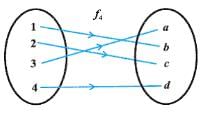JEE Exam > JEE Tests > Mathematics (Maths) Class 12 > Test: Introduction To Functions - JEE MCQ
Test: Introduction To Functions - JEE MCQ
Test Description
15 Questions MCQ Test Mathematics (Maths) Class 12 - Test: Introduction To Functions
Test: Introduction To Functions for JEE 2025 is part of Mathematics (Maths) Class 12 preparation. The Test: Introduction To Functions questions and answers have been
prepared according to the JEE exam syllabus.The Test: Introduction To Functions MCQs are made for JEE 2025 Exam. Find important
definitions, questions, notes, meanings, examples, exercises, MCQs and online tests for Test: Introduction To Functions below.
Solutions of Test: Introduction To Functions questions in English are available as part of our Mathematics (Maths) Class 12 for JEE & Test: Introduction To Functions solutions in
Hindi for Mathematics (Maths) Class 12 course. Download more important topics, notes, lectures and mock
test series for JEE Exam by signing up for free. Attempt Test: Introduction To Functions | 15 questions in 15 minutes | Mock test for JEE preparation | Free important questions MCQ to study Mathematics (Maths) Class 12 for JEE Exam | Download free PDF with solutions
Test: Introduction To Functions - Question 1
If y is expressed in terms of a variable x as Y = ƒ(x), then y is called
Detailed Solution for Test: Introduction To Functions - Question 1
Test: Introduction To Functions - Question 2
Let f : R → R defined as f(x) = x be an identity function. Then
Detailed Solution for Test: Introduction To Functions - Question 2
| 1 Crore+ students have signed up on EduRev. Have you? Download the App |
Test: Introduction To Functions - Question 3
Let A = {1, 2, 3} and B = {5, 6, 7, 8, 9} and let f(x) = {(1, 8), (2, 7), (3, 6)} then f is
Detailed Solution for Test: Introduction To Functions - Question 3
Detailed Solution for Test: Introduction To Functions - Question 4
Test: Introduction To Functions - Question 5
Let f : N →N be defined by  for all n ∈ N.
for all n ∈ N.
Then, the function f is
Detailed Solution for Test: Introduction To Functions - Question 5
Detailed Solution for Test: Introduction To Functions - Question 6
Detailed Solution for Test: Introduction To Functions - Question 7
Detailed Solution for Test: Introduction To Functions - Question 8
Detailed Solution for Test: Introduction To Functions - Question 9
Test: Introduction To Functions - Question 10
A function f: X → Y is surjective if and only if
Detailed Solution for Test: Introduction To Functions - Question 10
Test: Introduction To Functions - Question 11
The range of function f : R → R defined by f(x) = x2 is
Detailed Solution for Test: Introduction To Functions - Question 11
Test: Introduction To Functions - Question 12
Let f : R → R defined as f(x) = 5 be a constant function. Then
Detailed Solution for Test: Introduction To Functions - Question 12
Detailed Solution for Test: Introduction To Functions - Question 13
Test: Introduction To Functions - Question 14
Let f: {1, 2, 3} → {1, 2, 3} be an onto function. Then, f is
Detailed Solution for Test: Introduction To Functions - Question 14
Detailed Solution for Test: Introduction To Functions - Question 15
|
204 videos|290 docs|139 tests
|
Information about Test: Introduction To Functions Page
In this test you can find the Exam questions for Test: Introduction To Functions solved & explained in the simplest way possible.
Besides giving Questions and answers for Test: Introduction To Functions, EduRev gives you an ample number of Online tests for practice
|
204 videos|290 docs|139 tests
|
Download as PDF




 x in R such that f(x) = y.)
x in R such that f(x) = y.)














